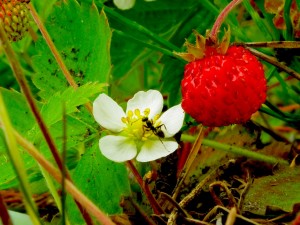Carotenoids
Have you ever wondered why your favorite fruits and vegetables display such a fascinating spectrum of colors? It’s not by coincidence. The specific shade of …
https://www.youtube.com/watch?v=lstGWn3S6co
Carotenoids, what are they and what are the health benefits?
The life on earth is often presented by bright display of colors, ever thought; why is that? Why do the flowers splash out in such brilliant colors, and also the gloss surface colors of fresh fruit and vegetables?
It turns out that the bright rainbow colors of the Fruit and Vegetables are actually pigments called the Carotenoids, these pigments contain strong anti oxidant properties. Four of the most common Carotenoids are; Beta carotene, Lutein, Lycopene, Astaxanthin. They are also called; Phytonutrient Antioxidants. Libid soluble Organic compounds, these are capable of impressive amounts of oxygenation suppression.
The vast research done over many years on human health has yielded results that prove that the Carotenoids do positively affect the quality of life. Particularly in the following areas;
• Cardiovascular system.
• Immune system support.
• Healthy Vision system.
• Respiratory function system.
The Carotenoids are said to be teeming with compounds that have been shown to positively affect the quality of life. They protect the many millions of molecular cell structures of the body from the attacks of free radicals. Free radicals break down good molecular structures, by their dynamic chemical reactions.
“A free radical is any atom or molecule that has a single unpaired electron in an outer shell. While a few free radicals such as melanin are not chemically reactive, most biologically-relevant free radicals are highly reactive. For most biological structures, free radical damage is closely associated with oxidative damage. Antioxidants are reducing agents, and limit oxidative damage to biological structures by passivating them from free radicals. – Wikipedia.
In our modern world today we can make use of the vast amount so research done about nutrition and health, and also the availability of healthy food ingredients. It is up to us to take the time to read and learn what the latest information on health and nutrition is. From time to time old information is updated with the latest research done that is understandable because often the research done was very specific and did not take into consideration many other possibilities. E.g. if a research results show that the cause of heart disease is most common amongst people that eat a lot of butter, then it is too simplistic to conclude that butter as an ingredient is unhealthy, and therefore it should be tossed out with other unhealthy ingredients. Just recently the message from researchers is that butter is a natural product and it does have health benefits, and with sensible moderation of use it should be included in a diet, especially for the people that have no apparent health risks or heart disease. It is always a good idea to find out what the recommended quantities are, and then to weigh it out in your own kitchen to see how the amount looks, and how far it goes. E.g. if it is 10 grams of butter per day, how many slices of whole meal bread does that cover?
One of the easiest things to do, considering how much bother it must have been to the previous generations is to make use of the easy availability of fresh fruit and vegetables. For many in the past they only got what they grew themselves, can you imagine what it would be like to grow and eat only the foods that you grew yourself. Depending where you live, it could mean that to get a healthy varied diet of foods you would need to relocate to a more favorable climate, or build a green house with many extra expenses and running costs.
The most common Carotenoids that have shown to positively affect the quality of life mentioned earlier are; Beta carotene, Lutein, Lycopene, Astaxanthin.
In which food ingredients are these Carotenoids found in?
- Beta-carotene, alpha-carotene, and beta-cryptoxanthin: Orange-colored fruits and vegetables; carrots, apricots, mangoes, squash, papaya, and sweet potatoes to name a few.
- Lutein: Green vegetables, spinach, kale, broccoli and collard greens, also contain beta-carotene.
- Lycopene: tomatoes, guava, and pink grapefruit. Salmon, shellfish, milk, and egg yolks.
- Astaxanthin.
It makes good sense to be selective in the planning stage of a grocery shopping list, make a lot of room for fruit and vegetables. Next time you are preparing that grocery list, think about all those bright colored fruit and vegetables and how they contain the good pigments called Carotenoids, and do add them creatively to your daily diet, because they have been shown to positively affect the quality of life.
Natural berry nutrition and antioxidants. https://www.youtube.com/watch?v=31MJifPeX9s

